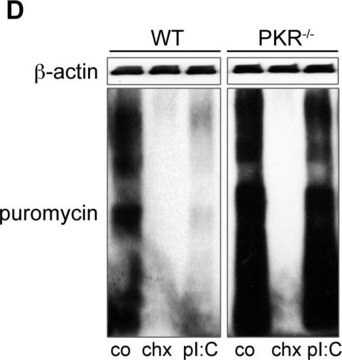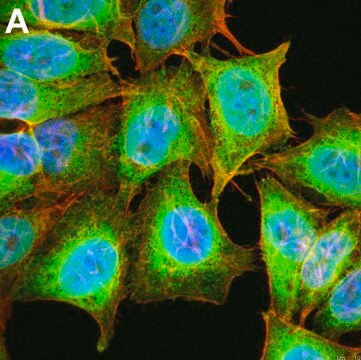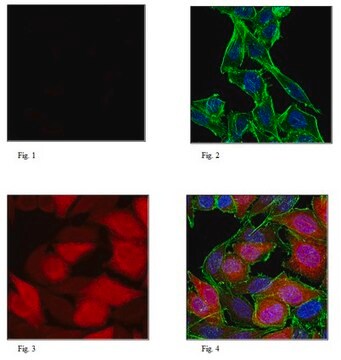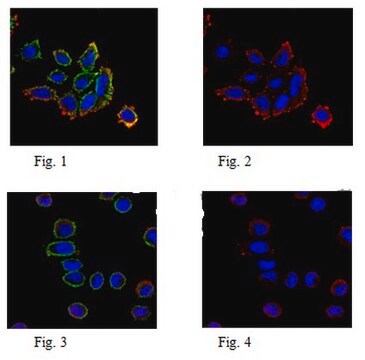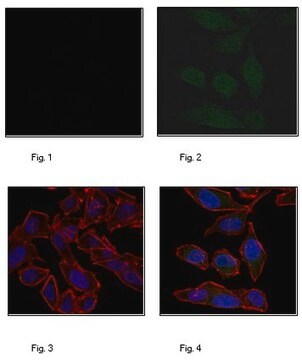MABE343-AF488
Anti-Puromycin, clone 12D10, Alexa Fluor™ 488 Conjugate Antibody
clone 12D10, 0.5 mg/mL, from mouse
Synonym(e):
Alexa Fluor 488 antibody
About This Item
Empfohlene Produkte
Biologische Quelle
mouse
Qualitätsniveau
Konjugat
ALEXA FLUOR™ 488
Antikörperform
purified antibody
Antikörper-Produkttyp
primary antibodies
Klon
12D10, monoclonal
Speziesreaktivität
human
Konzentration
0.5 mg/mL
Methode(n)
immunocytochemistry: suitable
Versandbedingung
wet ice
Posttranslationale Modifikation Target
unmodified
Allgemeine Beschreibung
This product is a conjugated version of Cat. No. MABE343.
Spezifität
Immunogen
Anwendung
Epigenetik & nukleäre Funktionen
Zellzyklus, DNA-Replikation & -Reparatur
Qualität
Immunocytochemistry Analysis: A 1:2,500 dilution of this antibody detected Puromycin-incorporated neosynthesized proteins in HeLa cells treated with Puromycin only.
Alexa Fluor™ is a registered trademark of Life Technologies.
Zielbeschreibung
Physikalische Form
Lagerung und Haltbarkeit
Rechtliche Hinweise
Haftungsausschluss
Sie haben nicht das passende Produkt gefunden?
Probieren Sie unser Produkt-Auswahlhilfe. aus.
Lagerklassenschlüssel
12 - Non Combustible Liquids
WGK
WGK 2
Flammpunkt (°F)
Not applicable
Flammpunkt (°C)
Not applicable
Analysenzertifikate (COA)
Suchen Sie nach Analysenzertifikate (COA), indem Sie die Lot-/Chargennummer des Produkts eingeben. Lot- und Chargennummern sind auf dem Produktetikett hinter den Wörtern ‘Lot’ oder ‘Batch’ (Lot oder Charge) zu finden.
Besitzen Sie dieses Produkt bereits?
In der Dokumentenbibliothek finden Sie die Dokumentation zu den Produkten, die Sie kürzlich erworben haben.
Unser Team von Wissenschaftlern verfügt über Erfahrung in allen Forschungsbereichen einschließlich Life Science, Materialwissenschaften, chemischer Synthese, Chromatographie, Analytik und vielen mehr..
Setzen Sie sich mit dem technischen Dienst in Verbindung.